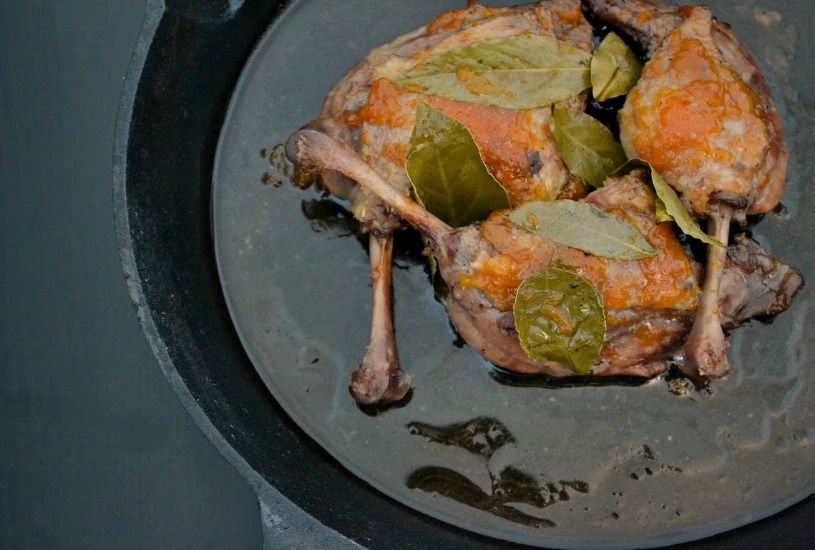What is a Roast?
A Beef Roast can come from many different parts of the animal, but the Chuck (shoulder) and Rib are most common. Some are all one muscle and yield a consistent texture throughout; some are groups of muscles together (for instance, a Whole Brisket includes two separate muscles, the “first cut” and “second cut” — the second cut is more marbled than the first). Depending on the shape, some roasts may come netted to help them stay together while cooking (remove the net before slicing).
How Do I Cook a Roast?
There are two main cooking methods for a roast: braising in liquid at low heat and roasting dry in high heat.
Braising (“Low & Slow”)
Braising technique is best for tougher cuts: after several hours of slow simmering, the connective tissues breakdown and yield fork-tender delicious meat. This meat can be sliced or shredded, depending on how you like it and how long you cook it. It’s really difficult to ‘overcook’ a braising roast, so this is a good technique if you are new to roasts or planning a hectic cooking schedule where you may forget to check on the meat for a while — an extra 20 minutes won’t make a difference.
Basic Braising Method:
Sear roast on all sides in a hot frying pan or dutch oven (if roast is very large, you can do this step in a 425F oven for about 5-8 minutes). Transfer roast to a crock pot or Dutch Oven. Add aromatics if desired (onions, herbs) and braising liquid (beer, wine, water, broth). Liquid should cover the bottom 2-3 inches of the roast (entire roast should be covered for Deckel and Kalakel). Cover tightly. Cook at a low temperature (250F) for 8-10 hours or until meat is very tender.
Roasting (High Heat)
High heat techniques are best for tender roasts from the Rib. We recommend using a meat thermometer (even better: a model with a probe that can stay in the oven during cooking) so you can avoid overcooking the roast. These roasts can get tough when cooked for too long. Remember, they’ll continue to rise about 10F after you take them out of the oven, so remove before you hit your desired doneness.
Basic High Heat Method
Season with spices or black pepper if desired. Sear on all sides in a frying pan or Dutch oven. Cook until a thermometer reads your desired internal temperature (remember, temperature will continue to rise 5-10 degrees after you take it out of the oven. Roasts should rest 15-20 minutes before serving.) We recommend cooking roasts at 375-425F. We recommend the section on roasting temperatures in The Joy of Cooking, or consult your favorite kitchen guide.
We also recommend you check out our archive of roast recipes!
Which Roast Is Right For Me?
Allow us to take you off the beaten track to explore some of the lesser-known and yet still amazing roasts from Grow and Behold. And remember, if we’re sold out of brisket, another roast from Grow and Behold will still be much more delicious than a brisket from anywhere else! Feel free to call (888-790-5781) if you have any questions about cooking a new piece of meat. We want to make sure your experience is 100%. And if you do try something new — we bet your guests won’t even know it’s not a brisket.
If you like a slow-cooked roast with liquid, try:
- Deckel – benefits from long cooking time, 8-10 hrs in liquid
- Kalakel – cook overnight in liquid
- Chuck Roast – can be cooked for a few hours if you want to serve as slices, or cook longer to shred and serve like Pot Roast
- Minute Roast – cook for a long time at a low temperature; will stay as nice slices, not shredded meat
- Top of the Rib – an evenly marbled roast, somewhere between 1st and 2nd cut brisket in terms of marbling
- Brisket Strip
- Pastrami Roast – this is the cut we use to make pastrami (not actually seasoned like pastrami)
- Brisket (whole, first cut, second cut)
These tender roasts stand up well to fast cooking at high temperatures:
- Beef Tenderloin
- Shoulder Roast
- Rib Roast
- French Roast
If you like a very lean roast, we suggest:
- Shoulder Roast
- Kalakel
- Deckel
- Beef Tenderloin
For a juicy and well-marbled roast try:
- French Roast – can be cooked low and slow or fast and hot
- Rib Roast – this is a high-end roast for slicing
- Top of the Rib
- Chuck Roast
- Pastrami Roast
- Minute Roast










